Waiting for it…



Destination Cambridge has revealed it is exploring an independent tourism hub incorporating a visitor centre following Waipā District Council’s decision to cut its annual funding.
The move to “go it alone” has been endorsed by the organisation’s board following an uproar from the tourism industry and the community, general manager Ruth Crampton told The News. It would be anchored by a partnership with the country’s largest rural tours’ operator and other tourism businesses.
Crampton said the council’s behind
closed doors decision to dump the annual grant – this year worth $157,000 - was made with little input from i-Site operators in Cambridge and Te Awamutu.
“The information they used was flawed and based on visitor numbers over three years when international tourism was affected by Covid. Numbers are back up to pre-Covid levels,” said Crampton.
Her criticism comes as Destination Te Awamutu chair Shane Walsh, who is also chief executive of Te Awamutu Business Chamber, confirmed the council’s decision resulted in two redundancies and a resignation at the town’s i-Site.
There were no redundancies in Cambridge

as staff are now working at Rural Tours and Crampton’s contract ends at the end of June.
Walsh echoed Crampton’s view by saying there had been no process.
“If there was a process and they told us there was going to be a recommendation, we could have been given an opportunity to convince them otherwise. We didn’t get that opportunity.”
The assumptions council staff made about i-Sites was wrong, he said.
“The work and the strategy of those two organisations suddenly stopped. It was just bang, it was about i-Sites. They said less people use it so we shouldn’t have it. It was a very narrow focus.”

Had they known, Destination Cambridge and Destination Te Awamutu could have worked together and potentially appointed one manager to run two i-Sites, he said.
Crampton and Walsh have both indicated $65,000 retained by the council for its communications team to do “online visitor promotional activity”, should be contestable.
“I think a group of volunteers called Destination Cambridge and Destination Te Awamutu are better equipped to do that because they are in the tourist industry. Instead of spending that money on growing their communications team, I’d rather that comes back to us,” said Walsh.

The preferred option for a new bridge over the Waikato River showing the northern end of it going through Cambridge’s north-western suburbs has spooked residents.
The realisation their houses could go under the Cambridge Connections business case saw residents contact The News, most searching for more information and how they could become stakeholders.
“It says everyone has been contacted… well, we haven’t,” said one caller.


Memorial Park
Main Street Cambridge
THIS SUNDAY 8:30AM TO 1PM
This SUNDAY 8AM TO 1PM
Another said she hoped to get a residents’ group together to find out more information from the council.
“This came like a bolt out of the blue.”
The council said last week the preferred option had developed as the favourite following 129 pieces of stakeholder input.
Transport manager Bryan Hudson said traffic modelling and growth projections were considered for the proposal, which is
now open for public feedback.
A double page spread in today’s Cambridge News shows the bridge going from Cambridge’s Town Belt across the river to an area between Dick and Grey streets and taking in Bryce and upper Duke streets.
The council describes it as a “potential” area for a third bridge.
Under the Resource Management Act, any designation for another bridge should be supported by a detailed environmental assessment of the options, consultation with iwi, landowners and the public.
This would only take place once there was buy in to the business case and funded was secured.
Limiting the Victoria ‘High Level’ Bridge to cyclists, pedestrians and scooters also took The News readers by surprise as did the dismissal of on-off ramps at the end of Tirau Road, near the golf course, onto Waikato Expressway.
Public feedback closes on Friday March 29.
Discussions still continue between Waipā council and Parallel Road landowners Nick and Vanessa Jennings over whether an Environment Court hearing appealing a decision to establish artificial structures and shelterbelt planting for a kiwifruit orchard will proceed. Mediation failed in November over the council’s decision to allow the orchard to proceed near Ōhaupō.
There was a noticeable decrease in the number of building consents issued by Waipā District Council in the three months ended December 31. The scope of the work for the 326 building consents – down 141 on the same period the previous year – were a mix of commercial and residential.
Waipā District Council’s group manager customer and community services Sally Sheedy has been appointed Civil Defence emergency management local recovery manager, as first reported in The News last year. The manager is responsible for recovery, preparation and work for territorial authorities and directs them to perform functions, powers, and duties of the area they are appointed to cover. Waipā council confirmed the appointment last week.
Book a stall at: www.cambridgemarket.nz
Featuring: The Rivertones
Book a stall at: www.cambridgemarket.nz
Hello again, I’ll start with some more good work stories.
Constable Tuhi recently attended a burglary where a work trailer was stolen from a site address on Thornton Road. His enquiries swiftly identified that the trailer had been seen being towed by a vehicle in Te Awamutu. Enquiries around that vehicle led him to successfully identify the male driver, locate and arrest him for the offence. With further investigation, he was then able to find out where the trailer was being kept and it was retrieved and returned to the grateful owner. Great work and a fast resolution.
This week police received a call about a stolen vehicle that had arrived at a local service station. We quickly responded and located the vehicle along with its male driver who himself had warrants for his arrest. Drug paraphernalia was found in the vehicle. The male is appearing in court on associated charges and the vehicle’s Auckland based owner was happy.
Last Friday afternoon, Senior Sergeant Hall and I teamed up with Eileen Hawkins and Kathy Rawlings from Neighbourhood Support Cambridge to host a community sausage sizzle, meet and greet outside Fresh Choice, Leamington. We were gratefully supported by Westpac Cambridge,
Cambridge Community Patrol and of course Fresh Choice Leamington.
It was great to see a good number of people signing up to join their local Neighbourhood Support groups. Connection with neighbours is so important on many levels. It helps reduce the isolation many feel – especially those living alone or elderly. Forming a neighbourhood support group makes it easier to address any concerns or issues that arise, your neighbourhood can better prepare for a civil defence or other emergency and crime prevention information is shared. Thanks to everyone who stopped for a chat.
In other news, Te Awamutu Police are holding a Saturday Open Day on March 16 from 9am to noon. Put it in your diary and take the family along. You’ll get a close-up look at our police vehicles, learn about our crime-busting technology, tour the station cells and meet Te Awamutu frontline staff. Police specialist squads will be on hand with the ever-popular Police Dog team, Search and Rescue, and members of the Armed Offenders Squad.
There will also be a chance for anyone interested in a career in NZ Policing to learn more about recruitment. Our colleagues at Fire and Emergency NZ and Hato Hone St John will be joining in with static displays
on Redoubt and Palmer Streets. I hope to see you there. Have a great week.







Rates going up
Rates will rise by at least 14.8 per cent from July despite Waipā District Council’s decision this week to put its 10-year Long Term Plan on hold and opt for an Enhanced Annual Plan instead. The plan gives council more time to understand government’s legislative changes and plan accordingly but budgetary challenges were still the same, council deputy chief executive Ken Morris said. The council will get a revised budget at its meeting next week.
The Hamilton and Cambridge Famers Market will remain in the Victoria Square for another five years after Waipā District Council approved a new licence and an annual fee of $13,260. The News revealed last June that the trust behind the market was paying market rates in Hamilton at Claudelands – but Waipā charged a $612 licence fee and annual administration fee of $357.
Checks are being made on 250 civic owned elm trees in Waipā after the fungal disease Dutch elm disease was found on a private property. The disease was first established in New Zealand in 1989 and is moving south – it was reported in Huntly in 2021.
The Waikato Regional Council’s Kauri Protection programme has been named as a finalist in the New Zealand Biosecurity Awards. The winners in eight categories will be announced on April 8.
A total of $32,500 is being made available through the second round of applications for funding through the Creative Communities Scheme. Waipā District Council distributes funds on behalf of Creative New Zealand, to support, promote, and increase participation in the arts.
The crew at Cambridge Hospice Shop have been congratulated by Hospice Waikato chief executive Craig Tamblyn for having raised $3.4 million for local hospice patients and their families over the past decade.
Tamblyn spoke about the milestone at a function at the store last week to mark 10 years at its current Anzac St premises. Prior to that, it operated from a smaller outlet in Duke St for a decade before outgrowing the space.
“You folk are absolutely phenomenal,” he told them. “It is all of you who have made this shop the great success it is.”
He credited Cambridge store manager Justine Webb-Elliott and her team of volunteers for establishing an outlet known as much for its friendliness as for its fundraising efficiency.
“Not only is this a celebration for your birthday but it is also for you all. As the years have gone on, people have come to realise that this shop is a destination.”
The money raised in each region’s hospice shops goes towards providing free palliative care for patients and families in their own communities, and Tamblyn said Cambridge was one of Hospice Waikato’s growth areas.
Also at the gathering was Karen Mansfield, Hospice Waikato manager of volunteer services.

She said there were 695 volunteers across nine stores in the Waikato, slightly down on a preCovid number of 750. The region deals with around 1600 patients a year. Cambridge is one of the busiest areas in the Waikato, and Waikato in turn is one of the biggest hospice catchment areas in the country.
Cambridge store manager WebbElliott has been there for four years and loves it, both because of the hospice connection and because of the people she works with. She said while Cambridge has 73 volunteers on the books there is always room to bring more on board to spread
the load.
“Right now, we’re finding Sundays really hard. They’re getting busier all the time and the more volunteers we have willing to share that load means each one might do just a few hours, and that might be just once a month,” she said, “I always say that when it comes to hospice, the nurses don’t take Sunday off … nor do the patients.”
An open day will be held at Hospice Waikato in Hamilton on March 23, when visitors to the Cobham Road site can see Rainbow Place, visit the inpatient unit and the art therapy section.


Waipā mayor Susan O’Regan has confirmed her council has no intention of selling its shares in Hamilton Airport but could be in the market to buy more.
Speaking to The News’ sister publication Waikato Business News, O’Regan said the council was fortunate to have such a strategic asset.
The airport sits at the northern end of the Waipā district and recent plan changes have opened it up to industrial development.
O’Regan said the council had not even signalled selling the shares was up for review; Waipā owns 15.6 per cent.
“The recent plan change opens up a very good amount of airport owned land and the share value is likely to increase substantially in future years which means it could be beneficial to buy more if we were ever in the position to,” she said.
The other shareholders include Hamilton city (50 per cent), Waikato and Matamata-Piako (15.6 per cent each) and Ōtorohanga (3.2 per cent). The five councils paid $2.125 million in 1989 and another $12 million in a shareholder call in 2008-2009.
The airport is now worth $234 million.
Waikato Business News also reports from the opening of Union Square and the Maersk Ruakura Superhub in Hamilton, meets Simon Bridges in Matamata, Prof Paul Spoonley in Cambridge, attended the Northern Infrastructure Forum in Hautapu, celebrated Chinese New Year where food was tossed and turned aimlessly and was Out and About capturing people, including Waipā residents, at various events.
• See: wbn.co.nz

















Just over $100,000 allocated by Waipā District Council to a Covid recovery fund will be returned unspent to council coffers where the community needs caused by the changing financial landscape is greater.
The council approved a $795,000 Covid-19 recovery package in June 2020 to help the district recover socially and economically from the pandemic.
Part went towards employing two community advisors – Gina Scott and Corren Ngerengere –plus an increase in event funding and district marketing.
The rest went towards a $400,000 contestable fund to help iwi and district organisations provide positive community outcomes post Covid.
Scott told the Strategic Planning and Policy committee this week the money provided much needed financial support.
“Clubs and community organisations were able to continue to pay regular expenses i.e. insurance/maintenance, to ensure they remained operational post the pandemic.
“Extra counselling services were made available to tamariki through local providers working alongside local primary schools and adult counselling opportunities were offered via the Cambridge Community House,” she said.



The community house got two grants, one for $105,040 in November 2020 – the largest grant to any organisation – to support an additional counsellor and social worker. The other was for $4500 in September 2022 for two talk groups and a community barbecue.
Funding of $10,000 to the Te Awamutu Community Food Forest 18 months ago resulted in 300 fruit trees being planted enabling

sustainability of the orchard for years.
Other organisations to make a difference were Te Awamutu Citizens Advice Bureau who trained new volunteers and upskilled existing staff; Te Awamutu disability provider ConneXu’s Hauora project which provided life skills so disabled clients could manage their own wellness and Cambridge Safer

Community Charitable Trust’s neighbourhood support initiative towards developing emergency plans.
“Due to the changes in the national approach to Covid-19 since the last fund allocation, and other pressures being faced by the community, it would be very hard to directly identify support opportunities relating specifically to Covid-19 recovery,” said Scott.

The committee approved returning the $100,213 left over to the council’s cash surplus.
Total grants made since
November 2020:
September 2022 - ConneXu 2020 Trust - The Hauora Project $13,008, Te Awamutu Community Food Forest $10,000, Ōhaupō Community, Sport and Recreation Centre Trust $6500, Citizens Advice Bureau Te Awamutu Incorporated $6899, Cambridge Chamber of Commerce $5000, Te Awamutu Sports $5000, Zion Church Trust - Counselling in Waipā Schools $13,093, Children’s First Charitable Trust $3000, Cambridge Life Skills Institute Trust $5000, Cambridge Community House $4500, Cambridge Safer Community Charitable Trust - Neighbourhood Support $5000, Grandstand Trust $8000.
June 2022 – Waipā District Council for community librarian $31,000.
December 2021 – Mighty River Domain $3034.99, Te Awamutu Safer Community Charitable Trust $30,000, Cambridge Safer Community Charitable Trust $30,000.
November 2020 – Ngāti Koroki Kahukura Trust $20,000, Ngāti Apakura Runanga Trust $10,000, Cambridge Committee of Social Services $1000, Citizens Advice Bureau Te Awamutu $5314.62, Cambridge Community House $105,040.



















The Child Cancer Foundation’s Street Appeal is on tomorrow and Saturday. Ōhaupō couple Stacey and Jonathan shared their daughter’s story with Steph Bell Jenkins.
It has been 551 days since Waikato Hospital doctors discovered a golf-ball-sized tumour ballooning inside Fionnlagh Adams’ brain.
The four-year-old was taken to Starship Children’s Hospital that night, Saturday, September 3, 2022.
Six days later, a medical team performed a nine-hour surgery to remove the medulloblastoma, an aggressive form of cancer that had grown between her brainstem and her cerebellum in just 4-6 weeks.
“Now that we go back and look at the symptoms – the droopy eye, the extra tiredness, the lower appetite, the poor coordination, the sleepiness, the vomiting – they are all signs that there is a neurological problem,” Fionnlagh’s mother, Stacey Ross, said.
Continued next page
















Continued from previous page
“But, despite four doctor visits over the previous month, no one picked it up.”
When Fionnlagh was admitted to Starship, Stacey and her husband Jonathan Adams vowed to do everything possible to save their daughter.
“And we have,” Stacey said. “We’ve done everything the doctors told us to do.”
Fionnlagh’s operation left her suffering from posterior fossa syndrome, a condition characterised by a range of neurological problems including muscle weakness and speech difficulties.
“When she woke up, she couldn’t move,” Stacey said.
“She couldn’t walk, she couldn’t talk, she couldn’t open up her eyes. She could breathe, thankfully. She could breathe by herself, but that’s about all she could do.”
In the days since, Fionnlagh has had “countless MRIs”, four brain surgeries, ovarian harvest surgery and 30 doses of radiation requiring general anaesthetic.
“She’s had horrific chemotherapy – she lost all of her hair, all of her eyebrows, her little eyelashes, all of it gone, everything – but we chose to save now and fix later,” Stacey said.
“We were like, so long as we
get through it all and have her at the end of it then we’ve done the right thing.”
Stacey admits she simply doesn’t have the energy to begin processing her grief around everything her family has been through over the past 18 months.
“If I sit there and I think about it, or I focus on it too much, I’m not going to be able to get up in the morning,” she said.
“At the moment it’s just easier to like, push it to the side, be busy and just get on with life.”
After making sure their homeschool lessons are completed by midday, Stacey piles her five children into the car and takes the now familiar trip from their family home in Ōhaupō to Conductive Education Waikato.
The government-funded unit, integrated into Woodstock Primary School in Hamilton, provides a family-focused child development service for children with learning, communication or mobility challenges.
Shortly after 1pm on February 22, Fionnlagh, now six years old, is working with her conductive education practitioner, Melinda Ashton.
Her arms and legs trembling with effort, Fionnlagh crawls across the cream carpet of her therapy room and makes her way unsteadily towards a plastic air
cushion, which Melinda helps her kneel on.
“I use it to challenge her muscles and just building muscles and working on coordination,” says Melinda.
“You can see her body has all these little shakes in it at the moment because she’s having to work pretty hard.”
A lot of things are hard for Fionnlagh now.
She can swallow again and is relearning how to talk, but her voice wobbles and her words slur together.
She can crawl, but cannot walk unsupported. She has a speech language therapist and attends two conductive education sessions and two physiotherapy sessions a week.
Today, she is tired. After sitting behind a wooden frame and throwing wallet-sized beanbags over the top for a few minutes, she rubs her eyes and cries out.
“Are you okay darling?” asks Melinda, who is supporting her small body.
“Hey, big deep breath,” she says, scooping Fionnlagh into her arms and laying her cheek on the girl’s mint green helmet. “Oh, I know. Oh, my darling. Shall we find something else?”
Fionnlagh continues working hard through the session, despite her fatigue. She places foam shapes on a wet mirror, crawls
through a fabric tunnel and collects plastic food items to make a sandwich for baby doll Tama.
Every now and then she stops to hug her mum and rest her head on her shoulder, as her siblings sit along a wall playing on electronic devices.
Melinda is impressed with the progress her student has made since her first visit last July.
“Fionnlagh is amazing,” she said.
“She is absolutely amazing; her whole family is. They’re so dedicated, and all her little siblings sit there patiently waiting for their sister to do her exercises, and her parents extend all these activities at home. They’re just a really good family unit.”
Doctors are confident Fionnlagh will walk again by herself one day, but it could take years.
“People are like oh, she’s out of treatment, she’s done, life’s normal again,” Stacey said.
“But I’m like no, normal for me is not physio four times a week, it’s not having walkers and bath seats and gym equipment in my lounge. It’s not having my sixyear-old not be able to walk. It’s not all of this, that’s not normal. We’re not back to normal. We are...I don’t know what we are. We’re adjusting to what our life is now.”
The Child Cancer Foundation is supporting about 1100 families nationwide.
“Every week this year, three Kiwi families will be told the heartbreaking news that their child has cancer,” said chief executive Monica Briggs.
“We don’t receive any direct government funding, so these families rely on the generosity of their fellow Kiwis to receive the vital emotional and practical support they need during the toughest time in their lives.
Stacey Ross says the foundations supporters her entire family.
“They helped us in ways we never expected. We loved that they helped us all, from including Finn’s siblings into the beads of courage programme to organising birthday cakes for them, to inviting us all to celebrations for Christmas where we could meet other families facing similar challenges.
“Our family support coordinator made all the difference to this journey and we appreciate her and everything they did for us.”



The Ministry for Primary Industries says it has no issues with garlic being used in a dog food sold in supermarkets. The ministry was responding to concerns raised by Cambridge resident Emile Valkenborg about the presence of garlic in Wag rice and garlic dog roll.
toxicity depends on the quantity and the form (processed vs raw) of garlic ingested by the animal.”
“We note that garlic is known to cause toxicity in animals including dogs, cats and livestock,” a response from the ministry’s senior adviser, compliance, Teresa Robinson, said.
The response said information provided by Butch Pet Foods Limited indicated the quantity of garlic used would result in a feeding rate below the 56mg garlic/kg body weight the National Research Council suggests can be considered safe in dogs.
“I’m certain that it is safe,” he said. Valkenborg questioned the response and noted a rival dog food company had taken the view no level of garlic was safe.
He said there was a lack of up to date data to support the safety of garlic in determining what level of garlic was safe for dogs and suggested “educated guesses” were being made.


“However, the development of
When the issue was raised in January Butch company representative Jeff Roby told The News garlic was a beneficial addition and the company had used it for decades.
“This is one of the reasons it is safest not to give your dog human food leftovers from your dinner, as many meals contain garlic in some form,” he said.



A hearing on March 18 will consider whether a six unit, three bedroom, two storey development on 1019 square metres in Kelly Road – next to the Kelly Road Motel - can proceed. The application from Kelly Road Investments breaches maximum building length, surface area, roof pitch and several compact housing requirements. It is a non-complying activity under the Waipā District Plan. Two parties oppose the application and
the council’s planner has recommended it not proceed.
New chief
Former Waipā Strategy and Community Services group manager Debbie Lascelles has been appointed chief executive at Gore District Council. She replaces Stephen Parry - a former Waitomo mayor - who resigned after 22 years when he fell out with new mayor Ben Bell. Lascelles left Waipā two years ago and in recent


months has worked at South Waikato District Council in executive roles.
Controlled purchase operations between the police and Waipā licensing authority in the last three months of 2023 found four businesses which sold alcohol to minors. The Alcohol Regulatory and Licensing Authority is likely to suspend the businesses’ licences if police are successful with enforcement.


Fencourt’s Andrew Johnstone is known to Good Local Media readers as the subject of a Costa Botes documentary When the Cows Come Home. He has also come out on the side of a planned incinerator for Waipā and put his case today. The News has not formed a view on the application but is encouraging debate. Don’t Burn Waipā has been invited to respond in next week’s edition of The News.
I want to recycle, I really do. I compost my food waste and dutifully rinse glass containers and put them in the Blue Bin and wash whatever plastic the Yellow Bin will take, carefully removing the lids and putting those with the non-recyclables in the yellow landfill bag. But when I haul that bag to the roadside for collection, I look at what I’m throwing away and wonder why I bother.
The fact is, when it comes to recycling New Zealand is an ‘underachiever’. What do we actually recycle? Not even the relevant Government departments know. The best guess is around 25 per cent.
What we do know is that our recycling rate is among the lowest in the developed world and that around 75 per cent of our waste ends up in landfill.
Proper recycling systems require investment, subsidy and long-term planning but successive governments have failed to do anything meaningful about our growing waste problem and the result is a booming landfill industry.
According to the Ministry for the Environment, New
Zealand will be a lowemission, low-waste society with a circular economy by 2050.
That’s a long way off and the ministry does not sugar coat the complexity of the challenge. The fact is that for now New Zealand is burdened with a complex waste stream of which a good 50 per cent is almost impossible to recycle and landfill is the only method of dealing with it. Or is it?
Many years ago, I visited the Hundertwasser designed toilet block in Kawakawa. I was deeply impressed and set about learning more about the man, which is how I first heard about Waste to Energy incineration.
The Spittelau Waste to Energy plant is located in the centre of Vienna. In the late 1980s it was damaged by fire and as they planned the rebuild the city decided to do something adventurous with an otherwise drab industrial building. Hundertwasser took on the job and the result is one of Vienna’s most beloved landmarks.
Vienna’s most prominent piece of public art burns

250,000 tonnes of waste a year, producing electricity, heating and hot water for some 50,000 households.
Using the latest technology the fumes are scrubbed clean of toxins before they are released to the atmosphere and as with all waste incinerators, any valuable mineral resources are removed from the ash before it is landfilled or repurposed. There are 2500 waste incineration plants in operation internationally.
Germany operates 156 incinerators and recycles 67 per cent of its waste. Singapore operates four incinerators
and recycles 60 per cent of its waste while Sweden operates 34 waste to energy plants with a recycling rate of 49 per cent and growing.
Most countries operating waste to energy technology are doing very well with recycling though there are exceptions. With 1200 incineration plants and a 20 per cent recycling rate Japan prefers to burn rather than reuse.
Meanwhile on the other side of the Sea of Japan, close neighbour South Korea operates 183 incineration plants and is the world’s third best recycler. Germany landfills 10 per cent of its waste, in Sweden and Singapore it is one per cent and mostly incinerator ash.
As long as there is a strong governmental commitment to recycling, waste to energy incineration does not adversely affect recycling rates, which is one of the main claims being made against the technology by those who are opposed to the idea of a Waste To Energy for Te Awamutu.
Then there’s the claim that the proposed plant will result in a pall of toxic smoke

hanging over Te Awamutu, one that will cause disease and pollute farmland. This might have been the case 50-60 years ago but not today.
The fumes from modern waste incineration are cleaned of toxins and particulates by a variety of processes and most of what comes out the smokestack is carbon dioxide and nitric oxide and it is typically less than the atmospheric emissions from landfill sites, which includes both carbon dioxide and methane.
Modern waste incineration plants are designed to be environmentally safe but strict government oversight is part of the equation and if New Zealand goes down
this route, we need to get this right. The European Union and Singapore both offer legislative examples worth emulating.
Opponents of the proposed Te Awamutu plant have been using misinformation and disinformation to create a climate of fear around the issue and that so many, including environmental and zero waste Non-Government Organisations, consider this a legitimate strategy brings into question issues of integrity and trust.
Waste to Energy could be a boon for Waipa and the nation as a whole, let’s not let propaganda driven hysteria ruin an opportunity to do things a little better.









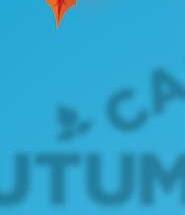
















The Nukes Big Family Show
Saturday 16 March, 12noon at Union Parish Hall





TICKETS: $10 From Paper Plus Cambridge



Sponsors:














Enchanted Frozen Storytime
Saturday 16 March, 10am at Cambridge Library











Sunday 17th March, 10am – 2pm










Victoria Street, Victoria Square and Town Hall
Music, dance, art, exhibitions and entertainment for all the








Cambridge Bricktopia 2024



Sunday 24 March, 10am-1pm at Resthaven Village Centre



KOHA (all funds go to Brain Injury Waikato)










Magician Zero Xiao and Face-Changing Magic
Sunday 24 March, 11am at The Woolshed, Te Awa Lifecare Village

Sponsors:










Waikato District Council has decided to defer its next Long Term Plan (LTP) until 2025.
Using the opportunity offered under legislation repealing the previous Government’s Three Waters programme, the Council will switch to an ‘enhanced Annual Plan’ for public consultation for the 2024/25 financial year, followed by a nine-year LTP from 2025-2034.
A key consideration in this decision is to gain better certainty around the Government’s next steps to implement its ‘Local Water Done Well’ programme. This will roll out in two bills later this year, with the second one - providing for new types of structural and financing tools - not expected to be introduced to Parliament until December.
Nevertheless, after three open workshops held this year on long term planning to date, a view has already emerged that general rates may need to increase by 13-14 per cent in the new financial year, starting in July, in order to cope with a range of increased costs.
Cost challenges include inflation, interest rates, increasing compliance requirements, and increasing asset maintenance costs, among others. While the last LTP planned for inflations levels of 2-3 per cent, in practice costs for the council have inflated at least 17 per cent over the past three years, with the current cost of civil construction being 26 per cent higher than three years ago.
In order to keep general rates to the level being discussed, the council has had to find about $2 million in operational efficiencies, and reduce expectations for our roading network, with a possible overall roading budget of $147m for the next three years which will afford only a small lift in resurfacing and rehabilitation work.

Targeted rates are set to rise for the same reasons, as well as to accommodate the new Government’s direction on Three Waters. Rubbish sticker prices are also under review, for example. They have not changed since 2017 when our waste management costs were $4.5m compared with $7.5m in 2022 and forward projections of costs rising to $11m by 2028.
Adoption of a draft enhanced Annual Plan is expected in time for public consultation to open later this month and continue into April.
Deferral of the LTP until next year confers several other advantages including more time to plan for a new era of water delivery after Watercare confirmed last week its withdrawal, as of June 2026, from a contract to operate the district’s water, wastewater and stormwater services.
This is disappointing since the Watercare contract offered benefits in service delivery, capital project delivery and procurement – but it’s also timely for us to consider a range of options for water service delivery post-June 2026, whether that be in-house, a councilcontrolled organisation, or delivery by another authority or agency.
There will be greater certainty around Waka Kotahi funding (expected to be confirmed in September). Waka Kotahi provides a 51 per cent subsidy for our roading programme which uses about a third of our general rates income. Also the will be greater certainty for ratepayers on rating impacts when we consult on the LTP in 2025. A QV property revaluation currently underway is not due for delivery until May.


We are specialists in Heating, Cooling, Ventilation, and Air Purification for Homes, Rentals, Businesses, and Commercial Buildings






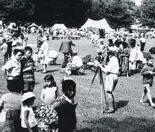










We only use quality, premium brands including Daikin



End-to-end service: from FREE Design/Quotes to Installation to Ongoing Servicing
Expert installation: our Installers are highly trained technicians
We are a long-established local business, and stand behind our 5-Year Warranty
Whether you are you are looking for a single heat pump, a multi-split, or a whole-house ducted system, contact Air Conditioning Group to get your job done right, and at the right price!
m: 027 514 1521
p: 0508 224 7687
www.aircongroupwaikato.co.nz ian@aircongroup.co.nz




OFFICE:
Taotaoroa Road, Cambridge 3496
SHOWROOM:
Unit 3 137 Ossie James Drive, Hamilton 3282







I love that
I spent a few days last week just southeast of Ruapehu assisting two PhD students with their fieldwork. One is working to understand a set of old ash layers from Ruapehu, the other on old lahar deposits. I say this as someone who studies relatively fresh deposits, preferably still hot.
These are recent compared to deposits on the order of hundreds of thousands of years. It’s all relative. We were looking for a deposit from ‘the Taupō eruption’ about 1,800 years ago (about 232 CE), approximately 70-80 km away from the caldera that produced it. In volcanology, plus fields like archaeology, marker layers/beds/ horizons are deposits that have a known age and stretch over broad areas. Simply put,
 By Janine Krippner
By Janine Krippner
we use them to say the stuff above it is younger, and the stuff below it is older. This gives us relative ages. In the lab we can use different techniques to narrow this down even further. For deposits younger than 50,000 to 60,000 years we can use Radiocarbon, or Carbon-14 dating if we have carbon (for example, wood) to calculate the age.
This particular Taupō eruption deposit is a great marker bed for the region. It is mostly whiteish pumice and ash, and it is very easy to tell apart from the other deposits because of the significant amount of black, charred wood fragments. We call this deposit an ‘ignimbrite’. From the components we can already tell two important things – pumice forms when viscous magma is blown apart violently by rapidly










expanding gas bubbles, and the presence of burned wood tells us that it was hot. One study found that the minimum charring temperatures ranged 269 to 398°C, which is actually quite cool for a volcano. That is the minimum though, and it is quite hot for us, Seeing this so far from the vent tells us that it was a very large eruption, and everything between me and the vent would have been devastated. In fact, this was the most powerful eruption in the past 5000 years, globally. Thankfully these eruptions are rare compared to the much, much smaller ones. The eruption produced a massive pyroclastic flow, made of pumice, ash, and hot gas that raced across the landscape at over 200-300 metres per second, devastating around 20,000square kilometres. My


colleague and I discussed what it would have looked like where we stood all those years ago. A huge, expanding, grey cloud rising over the hills, filling up our view. Would we run? Yes of course we would try. Would it help? With something this big, no. Seeing deposits in the field I understand a little more about them, and I have even more questions. When I get back from the field, I scour the research to see if someone has answered them. It takes many researchers to
understand events like this, each building upon the work of the last. Like detectives working to uncover the secrets within the deposits, we piece together the timeline from the magma forming far below the ground, through to how the landscape was altered. We then get to stand in the field with images in our minds of what those eruptions looked like, and marvel at how our landscape was transformed in a geological blink of an eye.



























































Come along to our open days.
Thursday 14 and Friday 15 March, 10am - 3pm, 33 Thompson Street, Leamington, Cambridge
It’s ‘home suite home’ with brand new care suites at Arvida Lauriston Park that offer care and support into your own private living space. Housekeeping, meals and laundry service are all provided – or if you’d prefer our deluxe suites you’ll also enjoy your own full kitchen and ensuite.
Priced from $245,000 (licence to occupy), the care suite range combines care with comfort in all the right ways.
For more information visit arvida.co.nz/lauristonpark or call Tineke on 027 241 4745





It is clear that Waipā District Council has, at long last, come out into the open regarding a future traffic plan for Cambridge.
Although, to be more precise, a general domicile for a possible third river bridge crossing. No surprise that it is in the general area of the Matos Segedin complex but matters of access and egress are left very much in the air. Again, to be fair to the council, they are listening to observers from outside of the council meeting room and power to their arm for that.
I suggest we all take the helicopter (or the drone) a little higher and ask ourselves just what traffic would utilise such a flow lane opportunity given that the ancient high bridge would be restricted to pedestrian and low speed vehicular traffic (bikes, scooters, pedestrians, four-wheel drive carts etc. In other words, while it is obvious that most of the traffic from Te Awamutu (and further) plus Kaipaki Road sourced movements would, in the main, use the third bridge.
The key question for those coming from the south and west is – what then? The target for the greater majority will be the Waikato Expressway - the extension to which (totally frustrated by the restrictive 2017 Labour/Greens government) will hopefully be in place all the way to the new roundabout at Piarere. A draft (and very much a draft) diagram suggests that, once the bridge is crossed, the (generally) northbound traffic will come to a screaming halt at the roundabout by St Andrew’s church. It is a pinch point that is already over-utilised with notable waiting times during commuter and school hours traffic movements.

Proponents of the bridge have been demanding attention for many years, but it is clear that a whole of movement(s) plan needs to be discussed sooner rather than later.
This before the fast-growing residential boom that Cambridge is experiencing (especially on the north side) chokes off all avenues of sensible movement.
The marked growth of tonnage flowing through the Port of Tauranga has shown locally in Cambridge with a noticeable increase in truck traffic linking the port with the King Country and Taranaki. Increases in export goods movements is very healthy for the country providing that the channels of movements are clear and un-cluttered. Clearance of a local pinch point to suit local Cambridge needs is unwelcome if restrictions to overall long-distance flows are increased.
It could be argued that the long-distance export-bound truck traffic should head towards the Tainui-supported large freight interchange alongside the railway link at Ruakura. However, many truck operators will die in the ditch to crawl over the dangerous Kaimai Hill rather than hand their freight to the severely loss-making railway operator. However, should this commence-sense solution prevail, the heavy traffic thundering through Cambridge would be markedly reduced.
I am very much an exponent of free trade and free operation of the country’s infrastructure but sometimes there is a need for an element of governmental common sense directional control required.
Have you noticed how many songs carry the theme of ‘moving on’?
Gaining inspiration from their circumstances, writers create lyrics about ‘moving on’ - a readily identifiable common reality we’ll all face throughout life. Whether referring to overcoming difficult situations, moving beyond loss, hurt or disappointment, ageing, moving on from a relationship, or moving on to new fields of endeavour- ‘moving on’ confronts everyone.
Regardless of what we’re moving on from, change is a huge unavoidable part of life. Done well it offers opportunity for growth and learning - even when it’s as mundane as shifting house. Actually- right there, is a trivialisation… relocating is rarely simple!
I’ve had a few house moves over the years and we’ve just undergone another one as a family in recent weeks. It’s fair to say ‘moving on’ this time has created a sense of upheaval, as well as lots of in-depth reflection tooperhaps more than ever before.
Preparing to move a household whether nearby or further afield, inevitably requires thought, planning and adjustment. Moving on is exciting for some but daunting for others.
Our ‘moving on’ was confronting. We made plans to sell our home of 10 years and entered a drawn out, unsettling process of determining what exactly we were moving to, where exactly it would be, plus when and how we were going to achieve it.
Having sold our home it remained unclear just what the next step should look like.
At this point, it’s relevant to say that having a personal faith in God and an unshakeable belief that He is with us and answers prayer, made the difference. It’s
not that we check our brains in at the door, but at times we just don’t ‘see’ with enough clarity and wisdom to make right choices.
In Chapter 3 of Proverbs (from the Bible), it puts the situation really well. There, God extends this invitation to us, “Trust in the Lord with all your heart, and lean not on your own understanding; in all your ways acknowledge Him and He will direct your paths.” In the very next line, it admonishes us ‘not to be wise in our own eyes’.

Those words have meant a lot to us as we’ve navigated our recent ‘moving on…’ I said it had been confronting. Here’s why. Packing up to shift, the awareness of how much stuff we’d accumulated and piled up was overwhelming… stuff we didn’t need, might not ever use, but had kept. Acquiring more ‘things’ just happens and we’ve determined to apply the brakes, using the antidote of simpler living and giving, to meet practical needs of others.
I know it’s relative, but most New Zealanders have a lot. It’s a dated statistic but Oxfam once stated that owning a car (even an older one in dubious condition) places you, by way of how the world’s resources are allocated, in the top five percent of wealth owners!
Jesus frequently warned against ‘stuff’ choking our real life, blinding us to eternal realities. “Watch out! Be on your guard against all kinds of greed; life does not consist in an abundance of possessions.”
May God help you in your ‘moving on’ challenge…






















































































































































































































A preferred option to address Cambridge’s transport challenges includes enhanced transport choices for walking, cycling and public transport, and a potential area for a third bridge.
Community feedback from the Waipā Transport Strategy and Ahu Ake - Waipā Community Spatial Plan consultations, as well as 129 pieces of stakeholder input helped inform this preferred option. Traffic modelling and growth projections were also considered.
Another two options can be viewed on our website. The preferred option scored the highest against the assessment criteria. We need to complete the appropriate cultural, geotechnical and environmental impact assessments, engagement, and gain support from central government before any work on the ground can begin.
Check out the preferred option’s map over the page. You can find out more about the project, watch the stakeholder workshop presentation and read about the next steps by visiting waipadc.govt.nz/cambridgeconnections.
Full Name:
Postal address:
What do you like about the preferred option?
Cambridge Connections is a project that will shape Cambridge’s transport infrastructure for the next 30 years. It comes out of the Waipā Transport Strategy’s objectives and outcomes.
The project considers how to reduce traffic demand, provide transport alternatives, and maximise use of existing infrastructure.

Share your feedback
You can have your say by:
Filling out the below form and returning it to our Cambridge office, 23 Wilson Street or Te Awamutu office, 101 Bank Street.
Visiting our website waipadc.govt.nz/cambridgeconnections, download the feedback form and return it to us.
Emailing cambridgeconnections@waipadc.govt.nz
5pm Friday, 29 March, 2024 Feedback closes:
Organisation (if applicable):
Email:
What don’t you like about the preferred option?
Any other feedback.


This option enhances transport choices by amplifying walking, cycling and public transport with increased bus timetables to Hamilton and around Cambridge.
Victoria Road optimisation
Potential area for all modes river crossing
Frequent public transport service to Hamilton every 20-30 minutes
Local Cambridge service every 10 minutes
Enhanced urban mobility network
Key Corridor optimisation
Roundabout
Signalised intersection
Capacity improvements
Access closures
Safety improvements
Signalised crossing
Streetscape improvements
Other options can be viewed at waipadc.govt.nz/cambridgeconnections
Walking and cycling only (Closed to cars)




Victoria Street streetscape





Carters Flat optimisation

Shakespeare Street optimisation


When Donna Warwick saw the heavy rain falling on Sunday morning, she wondered what impact that might have on her beloved Waipā Fun Run.
A record 691 competitors entered the event, now into its 14th year, and the timekeeper clocked 558 finishers.
The St Peter’s Catholic School office manager was there at the start in 2012 – when it was established to align with its “healthy mind, healthy body philosophy - and continues to be at the heart of operations today as co-ordinator.
The year 2014 – when a cyclone hit – and 2022, during the dregs of a pandemic - are the only two to have seen cancellations. So a little bit of rain – making conditions ideal for runners – was not going to deter Warwick and the organising team.
“I’m sure if the weather had played ball, we would have been well over 700,” she said. In fact, some competitors registered on the day as the rain bucketed down.
Charity partner Cambridge Lifeskills, which provides counselling, support and encouragement to young children, received $691 - $1 from each competitor’s entry fee.
“Massive thank you to all those who turned up with smiles on their faces and made the most of the


adverse conditions,” said Warwick. Competitors came from Papamoa, Hamilton, Ōhaupō, Matamata, Ngāruawāhia, Morrinsville, Gisborne, Waiterimu, Taupiri, Matangi, Te Awamutu,Tamahere, Whatawhata, North Shore, Tokoroa, Puketotara, Tirau, Karamu, Raglan, Motumaho, Otewa, Pukeatua, Kihikihi, Roto-o-Rangi, Eureka, Mangateparu and Maine (USA).
Cambridge’s Lane Madsen and Jake Wilkinson were first and second in the men’s 10km run and walk with Seth Herbert in third.
Hamilton’s Yasmin Campbell comfortably won the women’s 10kms from Cambridge runners, former Australian Commonwealth Games middle distance competitor Lauren Shelley and Gemma O’Neill.
Local Joshua Madsen won the 5km run and walk from Ōtorohanga Orchard Valley Glamping’s Rico Dorssers with Vaughn Madsen of Cambridge in third.
Hamilton’s Rowan Torckler won the women’s event comfortably from Melissa O’Brien of
Ōtorohanga in second and local Brooke Devaney in third.
School results:
2km year 7 and 8, boys: Colin Johnston, Arthur Tilgham (both Cambridge Middle), Joshua Barclay (St Peter’s); girls: Emily Vowels (St Joseph’s, Morrinsville), Elena Quinn (Hautapu), Abigail Pike (St Peter’s Catholic).
2km year 5 and 6, boys: Jack Jordan (Marian, Hamilton), Jack Lockwood (Cambridge Primary), Benjamin Brown (Cambridge East); girls: Isla Lee (Leamington), Brinley Brough (Cambridge Primary), Charlotte Ball (Leamington).
2km year 3 and 4, boys: Luka Thompson (Cambridge Primary),
Flynn Jones (Hautapu), Karsen Smith (St Joseph’s, Morrinsville); girls: Charli Greenhalgh (Leamington), Kana Coley (Cambridge East), Seren Thomas (Woodstock).
Team results:
10km run and walk: More-re (Brad Tong, Alex Davies, Peter Tong, Sharon Robertson), Camex Civil (Stephan Brink, Liberty Deisher, Josaia Tamani, Paula Karepa).
5km run and walk: Camex Civil (Stuart Edwards, Ashleigh Watkins, Tyna Ashby, Jack Huisman), Fire Security Services (Jane Seto, Kahleigh Pita, Rhonda Olsen, Matt Karatau).
Corporate 5km run and walk: Orchard Valley Glamping Ōtorohanga (Rico Dorssers, Melissa O’Brien, Te Taki Ruarau), The Fast and Furriest (Patrick Taylor, Brooke Devaney, Bill Hancock), Monacurragh Lodge (Deagon Everton, Lauren Brennan, Brylie Everton)
2km School Year 7 and 8: Cambridge Middle (Colin Johnston, Arthur Tilghman, Abel Bartz, Theo Leef), St Joseph’s Morrinsville (Ryan Mourits, Emily Vowels, Tyler Nickalls, Cameron Devaney), Hautapu (Quinn McGovern, Elena Quinn, Danae Bax, Maia Beveridge).
2km School Year 5 and 6: Cambridge East (Benjamin Brown, Sam Wood, Mikko Peden-Cullinane, Isaac Downey), Cambridge Primary (Jack Lockwood, Brinley Brough, Mia Balzer, Lansley Davies-Colley), Goodwood (Mason Hawkins, Fletcher Webb, Bath Iremonger, Olive O’Connell).
2km School Year 3 and 4: St Peter’s Catholic (Austin Miers, Paul Czyz, Toby Broadley, Hugo Broadley), Cambridge Primary (Luka Thompson, Lewis Lockwood, Sienna Vettise, Dylan Wadsley), Goodwood (Nikau Jacobs, James Nancekivell, Caleb Rosenberg, Hannah Bradford).
• More photos cambridgenews.nz


Pirongia’s tower action group will argue it was a case of losing the plot.
Late efforts to encourage a rethink of the site for Pirongia’s cell tower have failed – and led to calls for a local body to be more vigilant.
The Pirongia Tower Action Group (TAG) says a “small plot” of land zoned commercial, amidst residential housing, and close to a school and daycare, has left the community vulnerable to exposure of radiofrequency radiation from the tower.
The community will have
state of the art 5G coverage from the tower, 40 metres from some houses and a little over 100 metres from Pirongia School’s boundary.
“Going forward we would like [Waipa District] Council to carefully consider how it could better protect residents in the future,” a statement sent to The News by Ruth Webb of TAG said.
More than 2000 people backed a petition in 2019 opposed the site which was eventually settled on and announced as a fait accompli earlier this year.
TAG – re-established almost immediatelyspent four weeks trying to communicate – without
Our front page story about three teenagers charged with two aggravated robberies in Cambridge was the best read of our online articles last month.
Coming in at second was Gymnasts face a hurdle – the
story about the gymnastics club looking for support, while our ever popular News in Brief was third.
Photographer Nathan Pearson’s passion for horses was fourth and rounding out the top five was the report
success – with Connexa, the company which made the announcement.
“Connexa was unwilling to meet with Pirongia residents, preferring only communication via telephone and email,” a TAG statement said.
Ruth Webb says with 5G being a new technology, questions remain about health and safety implications for residents living near a cell site.
“The past has taught us that new products to the market, even those initially considered to be wonderful inventions, need to be treated with caution.”


on the opening of a local gin distillery.
Our home and publications pages on cambridgenews.nz are still the most popular non editorial parts of our website.
Readership was up 17 per cent on January.










Find houses for sale each week in your local independent Cambridge News and Te Awamutu News – covering the Waipa region













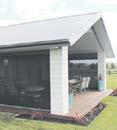






Several Cambridge High School rowing crews snared podium placings at the Aon North Island Secondary School Championships last weekend.
Stella Hohneck, Felicity George, Olive MacDonald, Sienna Ropiha and cox Jack Charlton won gold in the girls’ U15 coxed four event.
The regatta was a good test ahead of the Maadi Cup meeting later this month in Twizel.
Charlton was back for another taste of glory in the novice U18 coxed four race, helping Olive MacDonald, Felicity George, Lily Cameron and Sienna Ropiha to victory.
Also clinching medals in that event were
Stella Hohneck, Isobella Oxton Doubleday, Caitlin Cotter and Dana Fantom, who crossed the line in second with cox Sophie Stratford.
Continuing her return to form following injury, Tegan O’Dwyer teamed up with Lauren Wood to finish second in the girls’ U18 double sculls race.
Cambridge High School rowing chairperson Nic Peacocke said 25 crews had made finals across the squad.
“It was a big weekend of exciting racing.”
She said the school would take 44 rowers to the Maadi regatta for this year’s national secondary schools championships from March 18-23.
Four of the five para athletes named to represent New Zealand at the world track champs are from Waipā and the King Country.
The team announced last week comprises Nicole Murray (C5) (Ōtorohanga), Cambridge trio Anna Taylor (C4), Nick Blincoe (C4) and Devon Briggs (C3) and Ben Westenberg (C4) from Tauranga.
Para athletes who are able to use a standard bicycle with approved adaptations compete in five sport classes, C1-5.
The event will be in Rio de Janeiro, Brazil, from March 20-24, and is a key opportunity to earn slots at the Paralympic Games.
Much attention will be focused on reigning Omnium World Champions




• Aluminium frame
• Polycarbonate roof
• Hidden detail brackets
• Custom gutters
• Powder coated to colour of your choice
Murray and Taylor, following potent performances in Glasgow 2023. Murray was also named the world’s best female summer athlete in the 2023 para sport awards.
Tauranga teen Ben Westenberg will look to build on his 2023 World Championships debut, where he claimed a silver and a bronze medal.
The 18-year-old is studying Industrial Design at Waikato University. Devon Briggs turned 20 in January. He claimed six medals across 2022 and 2023 World Championships.
Blincoe just missing selection for Rio 2016 and Tokyo 2020 Paralympic Games. He is veteran of multiple Para Cycling World Championships, and represented New Zealand in U19 rugby before a rugby injury led to left arm paralysis.

• Manual or motorized
• Acrylic canvas or mesh
• Aluminium frame
• Stainless steel hardware
• Brass bushing
• 5 year warranty on frame
• 10 year uv warranty on canvas & mesh





 with Jan Bilton
with Jan Bilton
With an abundance of delicious summer produce available, it can be difficult deciding which taste treat to enjoy next. Stone fruits are in full flush together with sweetcorn, rocket, mint, basil and coriander. Mix the whole lot together with some cold, cooked pasta and a curry dressing and you have the ultimate summer salad.
To prevent sliced stone fruit from turning brown (oxidising), you can add a little lemon juice to prevent discolouration. Or — a great trick from the dark ages when we froze everything from peaches to pumpkin — add a dash of ascorbic acid (vitamin C) powder.
Dissolve a quarter of a teaspoon of the powder in a cup of juice, syrup or water to prevent a kilogram of fruit from discolouring. It’s also excellent for ensuring fresh fruit salads stay bright and appealing. Ascorbic acid isn’t as acidic as lemon juice and is readily available from health food stores. Many herbs can be frozen for later use — although fresh is always best. Parsley can be washed and dried and packed into plastic bags. It becomes crisp once frozen. Before serving, just slap the bag with your hands and the parsley will disintegrate. Basil leaves are best puréed with a little oil, frozen in small containers and used in sauces or pesto.
Fritters: 2 cups whole kernel corn 2 eggs, separated
1/2 cup coconut milk
1/2 cup coriander leaves, finely chopped salt and pepper to taste
3 tablespoons self-rising flour
1-2 tablespoons rice bran oil
Peach Salsa: 2 ripe peaches, halved, stoned, peeled and thinly sliced
1 tablespoon lemon juice
2 tablespoons finely chopped rocket pinch sugar
1/2 teaspoon chilli paste
Blanch and drain the corn. Cool. Combine with the egg
ACROSS
1 Greet (7)
4
9 Tiny aperture (7)
13 Expel (4)
14
15 Reduce (6)
16 Hide (7)
19 Enormous (10)
20
21 Deluge (5)
24 Incite to try harder (4,2)
25 Abrade (6)
27 Deception, trickery (9)
32 Gifted (8)
33 Game bird (6)
34 Shake involuntarily (7)
38 Begged (8)
39 Deluded (6)
41
42
45
52
55
56
57
58
61 Bridegroom’s attendant (4,3)
62 Extent (6)
63 Gets back (8)
66 Chess player’s call (9)
68 Perspiring (6)
69 Body shape (6)
73 Foolishness (5)
74 Coastal swamp tree (8)
76 Ostracism (10)
81 Captain (7)
82 US state (6)
83 Risqué (6)
84 Skin hole (4)
85 Three-pronged spear (7)
86 On the wrong track; very mistaken (3,3,4)
87 Temper fit (7)
DOWN
1 Incorrect (5)
2 Glossy (8)
3 Stance (anag) (6)
4 Photography brown tint (5)
5 Second-hand (4)
6 Let go (7)
7 Eventual outcome (6)
8 Large woody plants (5)
10 Scheme (4)
11 Leaping athlete (7)
12 Salve (6)
17 Scientist’s workshop (10)
18 Segment (5)
22 Bread snack (8)
23 Wild (5)

Corn, coconut and coriander fritters with peach salsa
yolks, coconut milk, coriander, salt, pepper and flour. Heat the oil in a large non-stick frying pan. Take heaped tablespoons of the corn mixture and place in the pan. (You will need to work in batches.) Cook on low heat until bubbles appear on the top. Flip over and continue cooking until the undersides are golden. Keep warm in the oven while cooking the remainder. You should have 12 fritters.
Combine the ingredients for the salsa.
To serve, place 1 fritter in the centre of each of 4 serving plates. Top with a little salsa. Top with another fritter, more salsa and a final fritter. You will have 4 stacks.
Great drizzled with a sweet chilli sauce. Serves 4.
Basil Dressing: 6 large basil leaves, roughly chopped
1/3 cup each: olive oil, cider vinegar
2 teaspoons diced shallot
dash each: flaky sea salt, freshly ground black pepper
Salad: 600g watermelon, peeled
1-2 avocados, peeled and stoned
2 tablespoons lemon juice
1 cup rocket leaves
a few basil leaves
Purée the basil and olive oil in a blender. Place in a bowl
24 Horizon (7)
26 Large settlement (4)
28 Spouse (7)
29 Food grain (6)
30 Firmly stuck together (6)
31 Severely criticised (6)
33 Swallows (5)
35 Sorcery (5)
36 Musical work (4)
37 Skipper’s hands (4)
43 Did duty (6)
44 Accounts check (5)
46 Love god (4)
47 Violent storm (7)
48 Specialist (6)
49 Girl’s name (5)
50 Went with (8)
51 Endemic (6)
52 Flown goods (3,7)
53 Wild goat (4)
54 Earnest (7)
59 Temporary repair (5)
60 North Briton (4)
64 Dirty mark (5)
65 Goodbye (2,6)
67 Chopper landing area (7)
68 US lawman (7)
70 Employee (6)
71 Root vegetable (6)
72 Young pig (6)
75 Tropical fruit with pink flesh (5)
77 Scrapbook (5)
78 Unit of heat (5)
79 Seabird (4)
80 Loyal (4)

Watermelon and avocado salad with basil dressing
and whisk in the remaining ingredients. Stand for a couple of hours to allow the flavours to combine.
Cut the watermelon into 3cm wedges. Slice the avocados and sprinkle with lemon juice.
Combine with the rocket and place on a serving plate. Garnish with the basil leaves. Drizzle with the dressing just before serving. Serves 4-6.
Sautéed scallops or prawns can be added to transform this side salad into a light meal.
Dressing: 3 tablespoons lemon juice pinch sugar
salt and pepper to taste
3 tablespoons extra virgin olive oil
Salad: 2 cups baby salad greens
3-4 large ripe nectarines
1/2 red capsicum, seeded and diced
3 spring onions, thinly sliced
Whisk the dressing ingredients, until well combined. Place the baby salad greens in the centre of four salad plates.
Halve and stone the nectarines. Slice and arrange over the greens. Top with the red capsicum and spring onions. Drizzle with the dressing and serve. Serves 4.
53
58
59
65
69
71
76
77

Quick crossword



Across: 1. Teach, 4. Choice, 7. UFO, 8. Slalom, 9. Refuse, 10. Commando, 12. Ogre, 13. Strand, 15. Enough, 16. Meow, 17. Suppress, 19. Domino, 20. Answer, 22. Ban, 23. Sneeze, 24. Traps.
Down: 1. Talk of the town, 2. All, 3. Human, 4. Corrode, 5. Off-colour, 6.
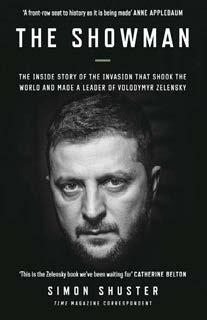

Wordsearch

XOCUSTANKANHRBANHP
AZRAELSFEIMCBVCODA
WORDDCDHASIIHKWRSE
NBZJORVRETPASOKYEU
PRRTYHFSNLIILYSBVC
GOTDVEVAEKLLBNUPMP
NWEERRMSUNEEUOBEIM
ONMMOOCSEFIPYTMPPJ
MIIYRIXOGGOLCLAINR
INZHSCUNREAIQIICOI
CGKROLOATBRUYMQCSD
OTCPTLONUYKNGGUEYY
UEIHNDECLDTVENRKNL
PNRNAMXEKSEKLCAANL
LNEOCBEVHRENEJNLEJ
EOMWKJWTSLFFFALBTJ
TSIDOGGERELEVATCOI
BALLADNNLEDNORISPM
ASSONANCE
AUDEN
BALLAD
BLAKE
BROWNING
BYRON
CANTO
CODA
COUPLET DOGGEREL
DRYDEN
ELEGY
EPIC
FEET
GNOMIC HAIKU
HEROIC
IAMBUS
IDYLL
KEATS
LANGUAGE
LEAR
LIMERICK LINES
LONGFELLOW LYRIC METRE
MILTON OCTAVE
ODES
OWEN
POEM
POET
REFRAIN
RHYME ROMANTIC
Sudoku

RONDEL SCOTT SHELLEY SONNET TANKA TENNYSON VERSE WORD

Based on four years of reporting; extensive travels with President Zelensky to the front; and dozens of interviews with him, his wife, his friends and enemies, his advisers, ministers and military commanders, The Showman tells an intimate and eye-opening story of the President’s evolution from a slapstick actor to a symbol of resilience, revealing how he managed to rally the world’s democracies behind his cause. Clear-eyed about the President’s early failures as a peacemaker and his willingness to silence political dissent, the book offers a complex picture of a man struggling to break what he sees as a historical cycle of oppression that began generations before he was born. Even as the war drags on, Zelensky lays out his vision for its future course and, through his actions, demonstrates his strategy for countering the Russians and keeping the West on his side. The result is a riveting, up-close picture of the invasion as experienced by its number one target and improbable hero.
The Showman, as a work of eyewitness journalism, provides an essential perspective on the war defining our age. As a study in leadership and human resolve, its appeal is timeless and universal.
is a senior correspondent for TIME Magazine based in New York and the magazine’s former bureau chief in Berlin, where he was responsible for coverage of the European Union and the former Soviet Union. His family immigrated from Moscow to
United States in 1989 and settled in
Francisco, where Simon grew up. After serving as a writer and editor at the Stanford Daily, his university newspaper, Simon returned to Moscow in 2006 to work as a journalist and joined TIME there in 2013. He returned to the U.S. in February 2020 to work on the nation desk.
Max Brown was so nervous before his first sprint canoe race for New Zealand at the Tokyo Olympics in 2021 he took half an hour to choke down two pieces of jam toast while his teammate, Kurtis Imrie, devoured a hearty breakfast of six eggs, bacon and hash browns.
“Kurtis asked if I was okay and I ran to the rubbish bin and threw up in front of all the other Olympians,” Max told students during a visit to Karāpiro School recently.
“I was so embarrassed and it was the first thing I had to deal with on my first day of racing,” he said. “I wanted to go to my room and cry.”
Instead, Max fronted up for his K2 1000m heat with Kurtis and finished second. The pair went on to place fifth in the Olympic final.
It was a lesson in resilience, Max said – a theme he and rower Davina Waddy emphasised as they spoke to Karāpiro School students and staff.
High Performance Sport New Zealand performance life coach Daniella Cameron said the visit was one of seven to Cambridge primary schools held recently leading up to the 2024 Paris Olympic Games.
Max and Davina encouraged the students to dream big, saying they had both attended small country schools and taken up their Olympic sports late in life.
“If you haven’t found a sport you’re passionate about, you’ve still got time,” said Max, who said he started paddling at age 14 with some mates.
“I got in the boat and I fell out immediately on my first day of kayaking…I fell out 13 times and my friends only fell out

three times – but I was more resilient than them, because once it got cold and dark, I was the only one of my friends who kept paddling through winter.”
Davina, who went to the Tokyo Olympics as a reserve and will represent Aotearoa at this year’s Paris Olympics in the first kiwi women’s four crew to compete in the games, took up rowing at age 18.



She told the students how, after failing to make a rowing team in 2019, it was resilience that kept her Olympic dream alive.
“If you’re gutsy and you keep showing up, you can make it to your end goal,” she said.
Max, who helped to create a song for the New Zealand Olympic team, ‘Ain’t

Just Dreaming’, with fellow Cambridge Olympian Ellesse Andrews which was released on Spotify and other major music platforms on February 29, encouraged the students to grab any opportunity that came their way.
“My goal here today is for everyone to leave feeling like you can achieve something amazing with your life,” he said.





























6 Thirlwill Lane, Cambridge
- Exquisite lifestyle property nestled in a private setting featuring the 380m² main house and attached 105m² two-bedroom ‘little house’, which boasts all convenient features for independent living.
Open Homes Saturday & Sunday 10.00 - 10.30am

Negotiation
19A Robinson Street, Cambridge
3 2 2
- Dining area, second living room, and master bedroom all open onto a sunny, north-facing wrap-around deck.
- Large heat pump in the living area and an HRV system. Open Home Sunday 10.00 - 10.30am Cambridge Park Champion

Negotiation
27 Pengover Avenue, Cambridge Park
4 2 2
- Great sized kitchen boasting ample storage space & breakfast bar.
- Clever layout maximises natural light and provides seamless access to the outdoor living area – a retreat for evening dining or relaxation.
- Immaculate grounds with a low maintenance section.

BEO $900,000
49 Tennyson Street, Leamington 3 2 4
- Charming three-bedroom, two-bathroom home on an an immaculate 1011sqm (more or less) freehold section.
- Master bedroom favourably features a walk-in wardrobe & ensuite.
- Expansive 4-car garage, complete with a handyman’s workbench.
- 11.30am



95

78
































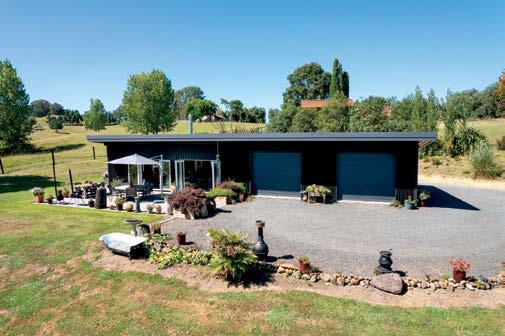



















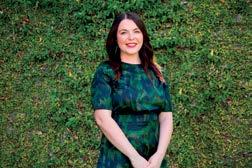


















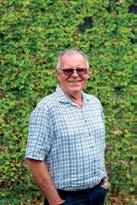








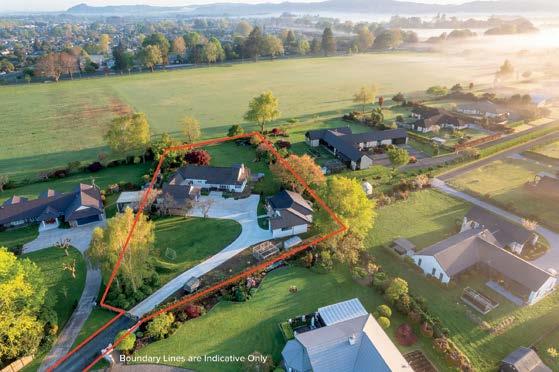























Cambridge Life Skills is a not-for-profit organisation that provides a free counselling service to students from 16 schools in the greater Cambridge area. Counsellors offer assistance and help to students between the ages of 5 years and 16 years. The Counsellors are advocates for children and young people and encourage consultation with parents and caregivers.
Cambridge Real Estate was founded in Cambridge in 2007, working for Cambridge and investing the benefits of our growth back into the Cambridge community and as a company we financially support and encourage this wonderful service.


























































































WILKINS, Geoffrey, (Geoff)
– Slipped away peacefully at Cambridge Resthaven surrounded by his family on Friday, 1st March 2024.
Aged 83 years. Dearly loved husband of Dot. Beloved father and father-in-law to Tara & Slade, and Yvette. Adored grandad to Justine, Reece, Cameron, Garrett and great grandad to Fern and Odin. Special thanks to the staff of Cambridge Resthaven and Dr Ian Gilbertson for their love and care shown to Geoff in his final days. A private family farewell has taken place. All communications to the Wilkins Family, c/- 3 Hallys Lane, Cambridge 3434.
GOULD, Teresa Ellen –
Passed away peacefully at Waikato Hospital on Monday 4 March 2024, aged 80 years. Much loved and loving wife of Albert for 60 years. Adored mother and motherin-law of Vicki and Craig, Jo and Sean. Cherished grandma of Jacob and Zac. A celebration of Teresa’s life will be held at Café Oasis, 35 Duke Street, Cambridge on Friday 15 March at 2:00pm. Teresa’s family request to avoid wearing black and wear some colour. In lieu of flowers, please consider making a donation to Save The Children on their website.


WINDSOR PARK STUD will be selling the mares Lisboa and Tiz Kate with assoc progeny under section 341 of the Contract and Commercial Law Act on Gavelhouse, Auction closing 18th March 2024.

Please join us to celebrate the first 100 days of National’s coalition government and hear from MP Louise Upston about what’s next. Saturday 9 March, 6pm. Good George Good Union, 98 Victoria Street, Cambridge. Free entry/cash bar.
KLS is looking for an experienced Office Manager Support, the role may include but not limited to the following:
o Company administration (accounts and payroll)
o Pre-qualification and tender documents
o Staff and office administration
o Organising staff training
10 hours a week, preferably 2 hours a day from Monday till Friday (negotiable).
Contact: Manu – 027 5919474 – landscaping@kls.nz





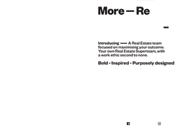

The Cambridge App is the go-to place for your latest mobile news, sport and opinion.
Every day, locals open the app to stay informed about what’s happening in Cambridge.
But there isn’t only news on this app: it features upcoming events, funeral notices, the latest properties for sale, places to eat and drink, activities, local businesses, and much more.
Download the Cambridge App, look around, you might be surprised by what you find.
•News • Property • Sports • Rural
•Lifestyle • Dining • Events
• Activities • Art & Culture • Funerals
•Jobs • Shop • Stay • Professionals

Scan here to download the app



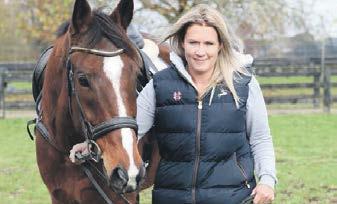
Main office 55 Victoria St, Cambridge
Reach a targeted rural and lifestyle audience each month by advertising your business in CountryLife; featured inside the Cambridge News and Te Awamutu News. Readership 70,470
Distribution 26,100



















